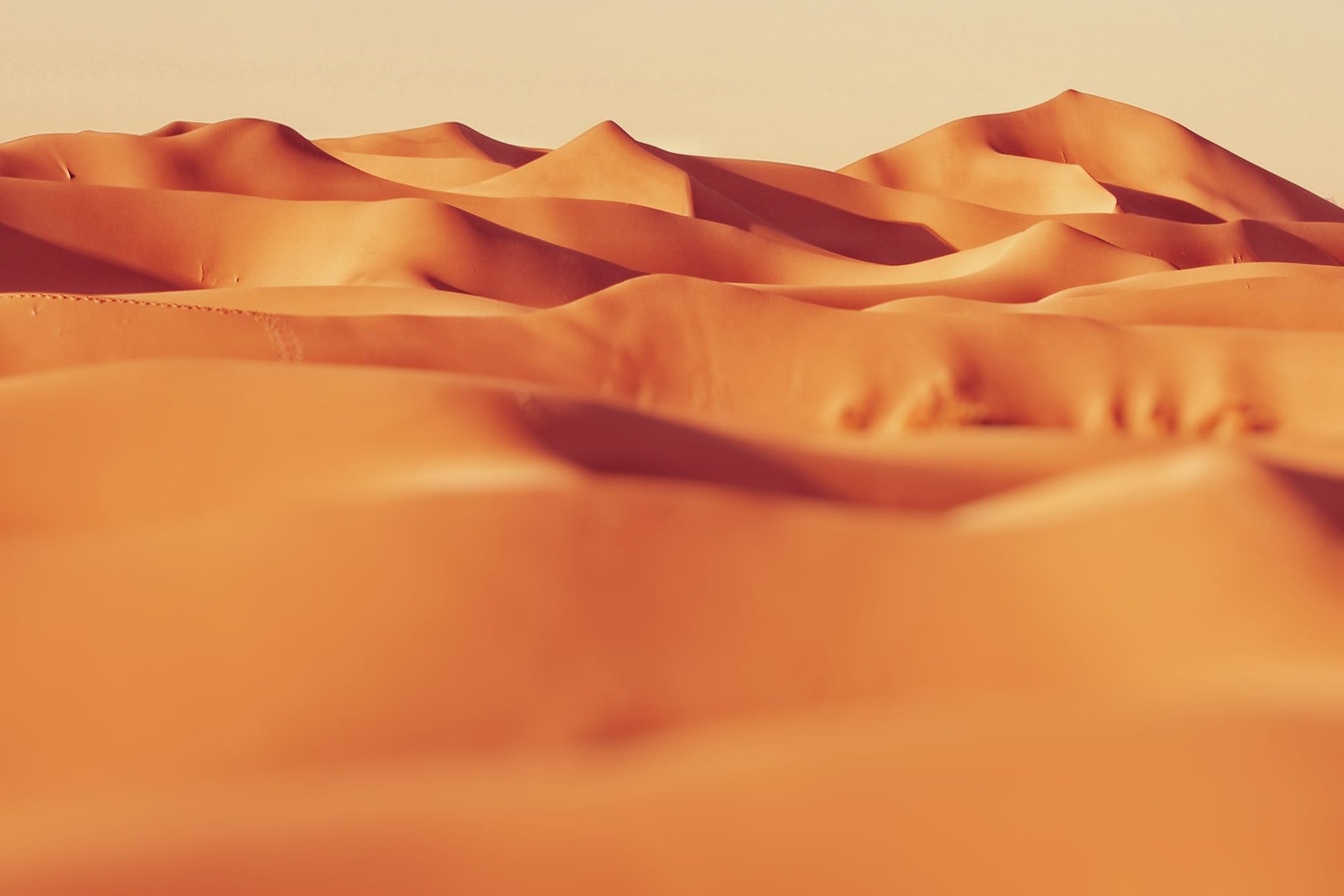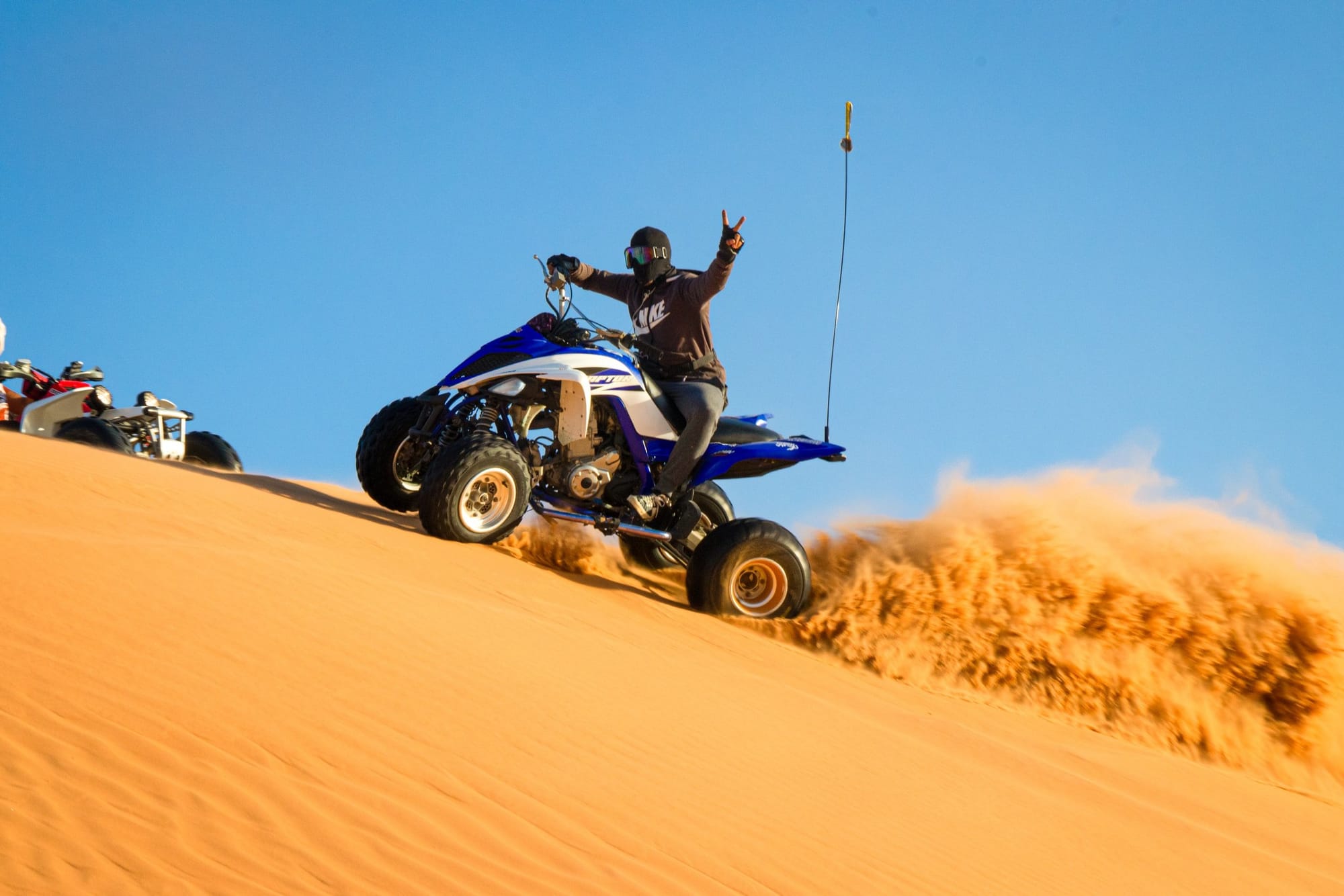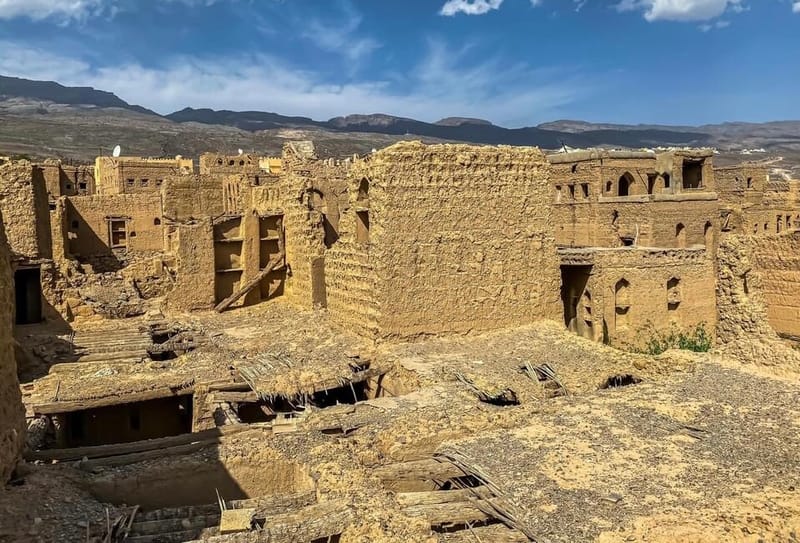

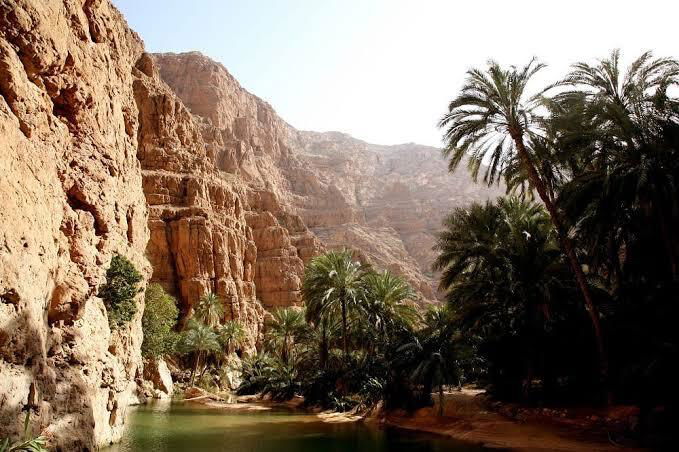
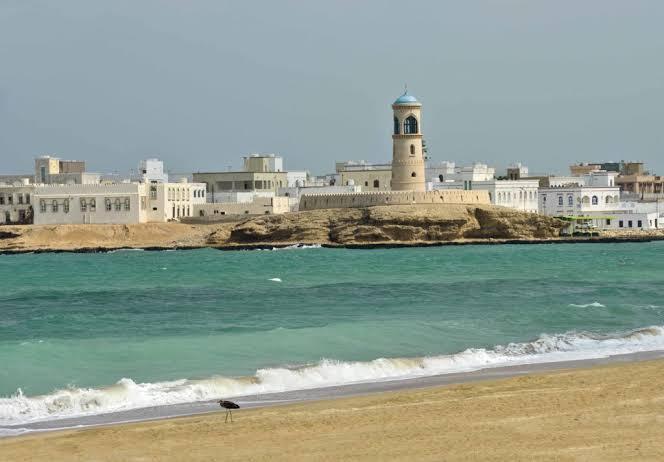

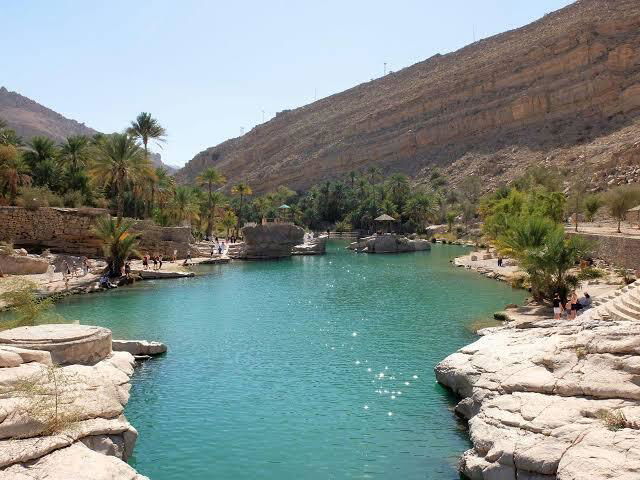
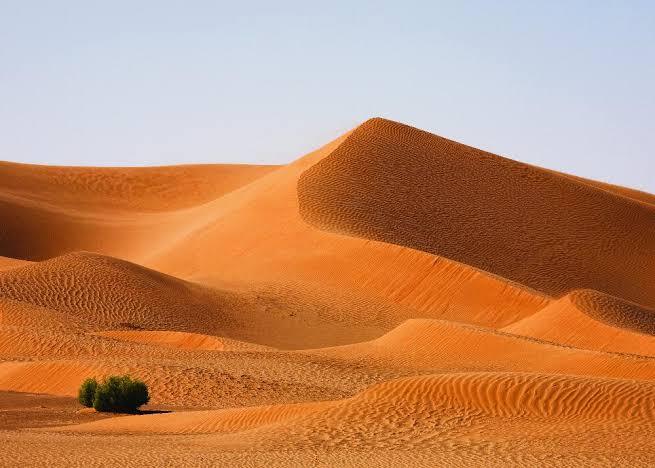
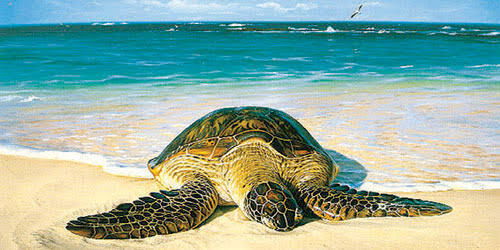
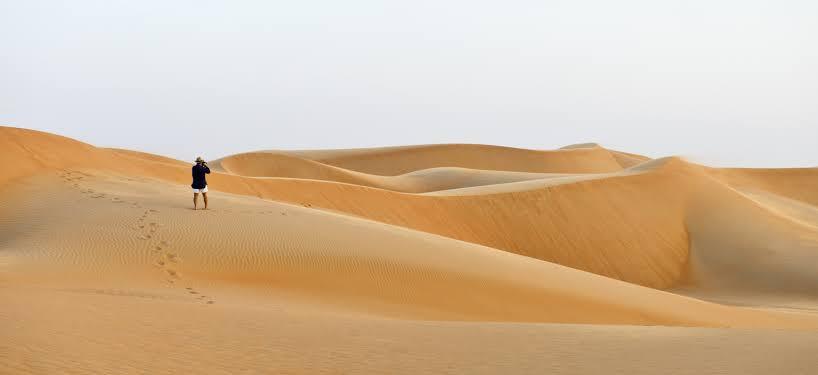

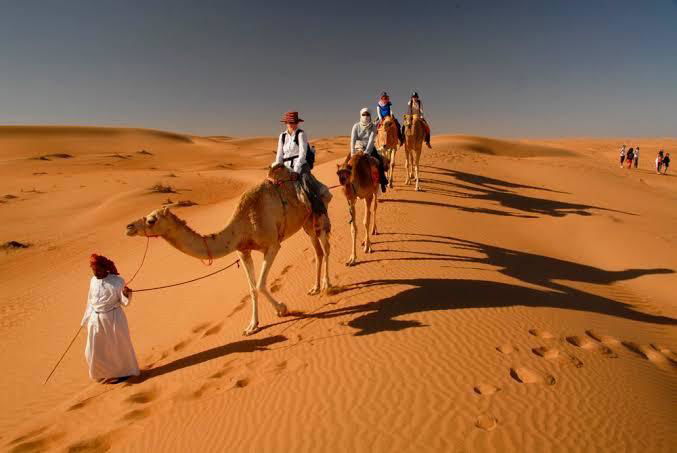
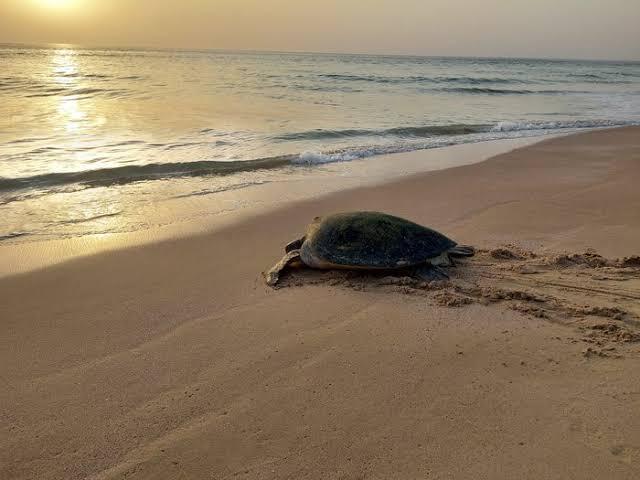
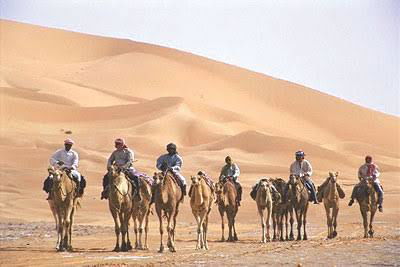
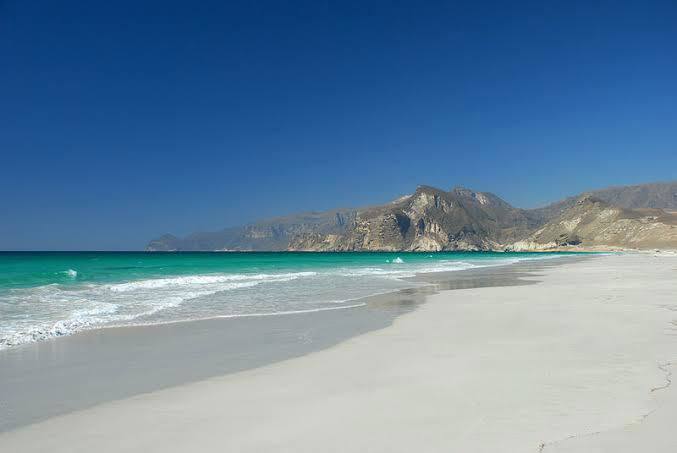
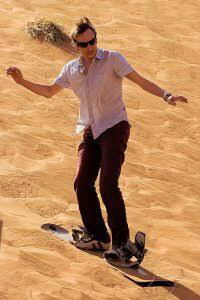
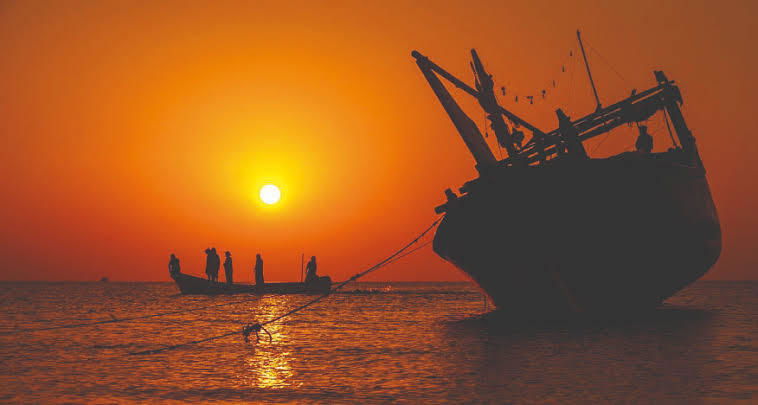
Al 'Sharqiyah Sands.
It is considered among the most beautiful camping areas in the Sultanate and extends over an area of up to about 10 thousand square kilometers.The Sand colors range from red to brown as far as the eye can see. It is the original homeland of the Bedouin, A destination in their own right, or a diversion between Muscat and Sur, these beautiful dunes, still referred to locally as Wahiba Sands, could keep visitors occupied for days. Home to the Bedouin, the sands offer visitors a glimpse of a traditional way of life that is fast disappearing as modern conveniences limit the need for a nomadic existence.
Ras Al Hadd Beach.
This beach is about 60 kilometers from Sur City, the capital of the A'Sharqiyah South Governorate. It has been home to human activity. since the third millennium BC and serves as a safe haven for ships from storms.,The Easternmost peninsula in Oman hosts one of the world's most important populations of green turtles. Throughout the year, these vast sea-reptiles haul their weight of up to 190 Kilograms from the sea at Ras Al Jinz to lay the future of this endangered species,From the around 100 eggs each female lays during a night, only one hatchling may survive to maturity. Visitors to Ras Al Jinz will find that the night walk to the beach may provide the rewarding experience of seeing the start of one of nature's most remarkable life cycles.
Turtle Reserve at Ras Al Jinz.
Ras Al Jinz Turtle Reserve, a unique natural landscape, unspoiled shorelines, golden deserts, luxuriant green oases and rugged mountains. The Ras Al Jinz Turtle Reserve is world renown as a nesting site of the endangered green turtle.
As Saleel Nature Park Reserve.
Best for seeing Arabian gazelles.
Designated a nature reserve in 1997, Al Saleel National Park extends across 220 sq km (85 sq miles) in the Ash Sharqiyah South governorate. Forests of acacia and gum trees cover the alluvial plains, and Egyptian eagles and vultures soar above barren wadis and rocky mountainous terrain. The park is home to more than 30 species of birds, at least eight kinds of reptiles and indigenous wildlife, including Arabian wildcats, red foxes, hares and wolves. Most visitors, however, come to see the Arabian gazelle – nearly 7% of its total population lives here, making Al Saleel National Park an important habitat for the conservation of the species in the region. Top tip for visiting Al Saleel National Park: Al Saleel is a little less than an hour’s drive from the coastal town of Sur, and it's a good stop on trips from the coast to the desert at Sharqiya Sands, or the pools at Wadi Bani Khalid. Because of changing entry rules and a new safari project nearing completion, call the Environment Authority before you go to see if a permit is required to enter the sanctuary.
Qalhat & Bibi Mariam.
The ruined tomb of Bibi Miriam is about all that remains of the 2nd-century settlement of Qalhat, one of the most ancient sites in Oman. There’s not much left to see, but if you pay the site a visit, you’ll be in excellent company: both Marco Polo in the 13th century and Ibn Battuta in the 14th century stopped here on their travels. A site restoration began in 2014 and is ongoing. Until it's complete, you can spot the tomb from the highway.If you make it over to the outlying grounds that extend to the sea, you’ll have the satisfaction of knowing that your journey to Qalhat was a tad more adventurous than that of your travelling forebears. In Marco Polo's day, Qalhat was a busy port frequented by merchant ships from India and a hub for the trade in horses from the interior. Today only the tomb, water cistern and remnants of city walls are visible, and in place of barques and dhows, all that the sea brings to the shore are sharks, sardines and rays. If you camp nearby, you'll find the water is often spangled at night with green phosphorus.
Wadi Bani Khalid.
Wadi Bani Khalid is one of the best-known wadis in the Sultanate of Oman. Its stream maintains a constant flow of water throughout the year. Large pools of water and boulders are scattered along the course of the wadi. As a geographical area, the wadi covers a large swathe of lowland and the Hajar Mountains.
Kuhūf ,form some of the features of this wadi. These include Kahf Maqal, which was described as an "underground chamber" of the Sultanate of Oman,or the akthar out of 4,000 caves. Aflāj (underground canals) are also common in this wadi, including ʿAin Ḥamūdah ,ʿAin aṣ-Ṣārūj and ʿAin Dawwah.
Wadi Shab.
Wadi Shab is one of the most lovely destinations in Oman, despite Hwy 17 slung across the entrance. The wadi rewards even the most reluctant walker with turquoise pools, a busy falaj (irrigation channel), waterfalls and terraced plantations; kingfishers add glorious splashes of colour and year-round trusses of pink oleander bloom by the water’s edge. A five-minute boat ride (OR1 return) is required to cross the mouth of the wadi to the trail head. While swimming in the lower pools is forbidden (they are a source of drinking water), there is an opportunity for discreet swimming in the upper reaches of the wadi, where you can duck into a partially submerged cave (skinny dipping is strictly taboo though). Guided hikes though the wadi (OR25 per person) can be arranged from Wadi Shab Resort, with discounts offered for groups. As with all wadis in Oman, flash flooding can make them impassable for a time. Check with recommended tour companies for up-to-date information on accessibility, especially after rains. Toilets, open from 7am to 7pm in the car park, are intended to dissuade visitors from relieving themselves in the wadi. Lighting a barbecue and camping are not permitted. Wadi Shab is signposted off the Muscat–Sur Hwy. You can’t miss it: the vista of mountains opening onto a pea-green lake is sublime after the barren plain. Vehicles, thankfully, cannot navigate the wadi beyond a small parking area.
Wadi Tiwi.
Wadi Tiwi almost rivals its neighbour, Wadi Shab, in beauty, especially in spring when the allotments either side of the wadi turn a vivid green. It's known as the ‘Wadi of Nine Villages’, and there's a sealed road along the wadi bottom and up through the villages. Although it's accessible by car, villagers prefer visitors to approach the upper villages on foot as it's easy to get large vehicles stuck between plantation walls.The wadi opens to the sea at the Sur end of Tiwi village. Donkeys and herons share the knee-deep grass at the mouth of the wadi. Unfortunately, you will also spot the giant highway pylons across the once picturesque wadi entrance. There is no public transport, but tours of Wadi Tiwi can be arranged from hotels in Sur.
Wadi Al Arbaeen.
is one of my favorite outdoors places in Oman and frankly… my favorite wadi. Wadi Al Arbaeen is not very accessible due to the lack of signage, and the stretch of off-road that you need to get through. However, you should definitely visit if you enjoy taking a dip in fresh water pools, which are in abundance here, and want to experience the serenity of walking through a wadi that feels very untouched. You almost get an eerie feeling wading through the wadi, especially further in. You should allow a minimum of 3 hours to explore Wadi Al Arbaeen, and much longer if you plan to really explore!
Sinaw Souq.
Sinaw traditional market is one of Oman’s popular old Souqs that is a linking point between three major Governorates.and been a commercial center for the trade caravans since the old times. The Souq gathers under one roof the locals of towns, village’s.Sinaw is known as an outpost town, it boasts of a lot of commercial activity. This is where the Bedouins or nomads of Oman come to conduct business. Much like the Muttrah souk, it is one of the oldest souks in the country and has been renovated in recent years. It sees the most crowds on Thursday mornings and weekends. You can even find livestock being auctioned off as you browse through the collection of fresh meat and fish and other agricultural goods.
Ibra Souq.
Located among the traditional buildings, fortresses, and towers, Ibra market reflects a sense of the region’s historical essence and ancient times.bri Souk is located near the Ibri Castle. This souk, much like the souk in Sohar, is known for its handicrafts and jewellery. Don't miss out on the beautiful gold and silver jewellery here such as bracelets, necklaces and anklets. It is also known for its dedicated area that sells well-bred animals. Ibri Souk is a little less than three hours away from Muscat in the south-west direction.
Bilad Sur Castle.
Built to defend the town against marauding tribes from the interior, 200-year-old Bilad Sur Castle boasts unusually shaped towers. It has been closed for an extended period for restoration, but you can wander around the outside. To reach the castle, turn left off Hwy 23 (Main St) at an elaborately kitsch residence, 1.3km from the clocktower roundabout at the Muscat end of town.
